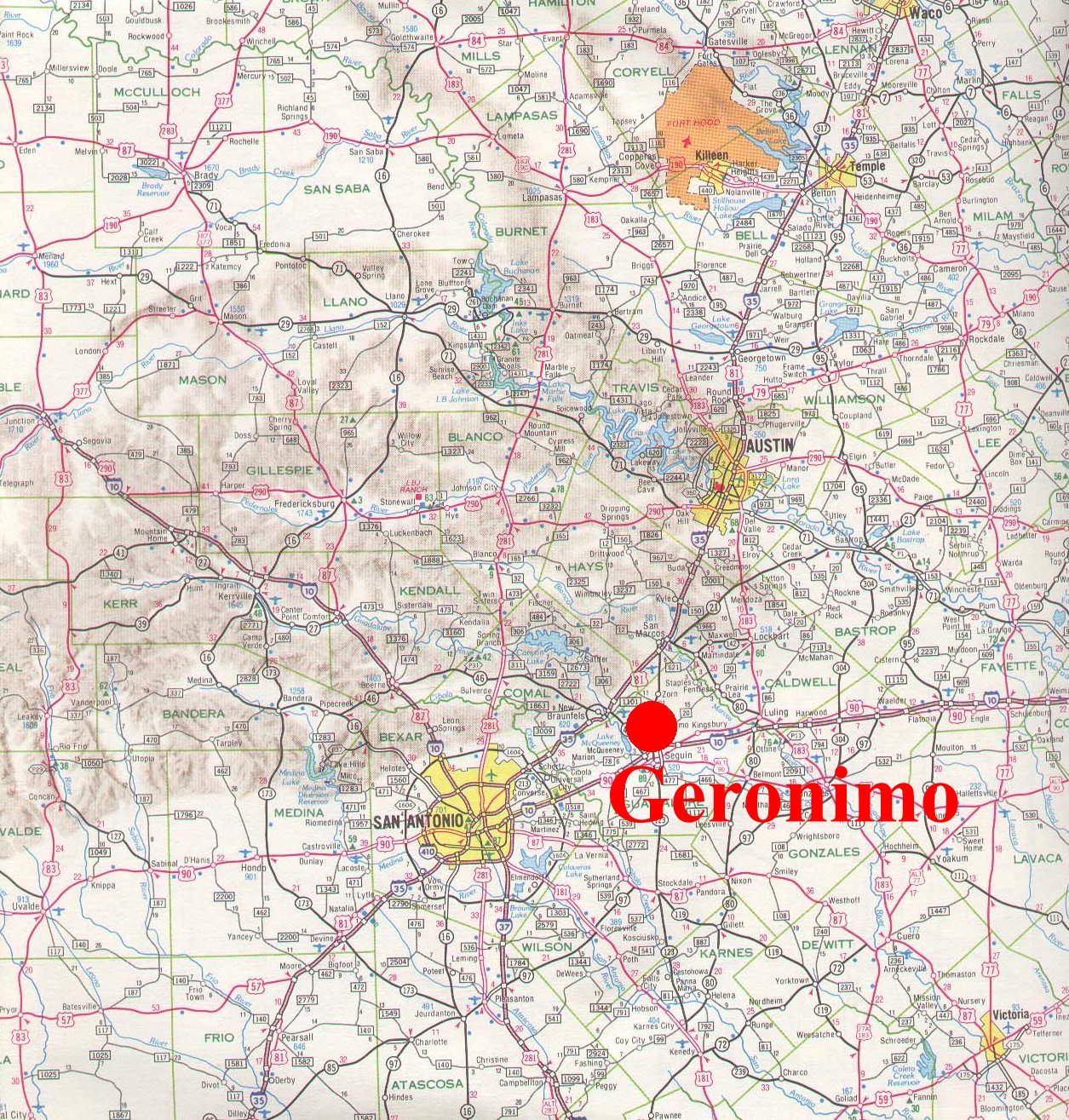

| Jami Powell | Spring 2001 |
| History 1302 | Hines |
Click on map to see larger view.

Around 1845 the German immigrants landed in this town. Seeing the growing popularity for this town, Navarro and his brother, Lucianno, began to parcel out their land to the immigrants. The two brothers even donated land for the original school. The first and most prominent families to settle Geronimo were the Timmermanns, Wuppermann, Boenig, Weinert, Koebig, Koepp, Specht, and Heinemeier-Neumann.
So with Hispanics obtaining the land and Germans inhabitating it, how was the Indian name of Geronimo given to this town? Contrary to popular belief, the town was not named for the infamous Chief Geronimo. Jose Antonio Navarro was actually the one to give Geronimo its name. Navarro's land was centered around the Tio Geronimo Springs, which played an intregal part in the community. This is because, even during the driest of seasons, these springs have never gone dry. Navarro then took the initiative to name this little town Geronimo.

WEBSITES:
Geronimo, Texas from Texas Handbook
ANNOTATED BIBLIOGRAPHY:
The Timmermann Sisters. Bread Pudding & Wine Sauce: The Timmermann Sisters. Seguin, Texas:
Tommy Brown Printing, 1996. This book provided me with excellent historcal background into all
the aspects that made Geronimo what it is today.
The Timmermanns Seven. Seven Silver Spoons. Seguin, Texas: Tommy Brown Printing, December 1983. This was the first book written by the Timmermanns. It gave smaller, but still good accounts of the history of Geronimo.
Sandi Robinson, Personal Interview 11 March 2001
Carolyn Bading, Personal Interview 11 March 2001
Wanda and Meta Timmermann, Personal Interview 11 March 2001
The Handbook of Texas on Geronimo, Texas: http://www.tsha.utexas.edu/handbook/online/articles/view/GG/hlg13.html